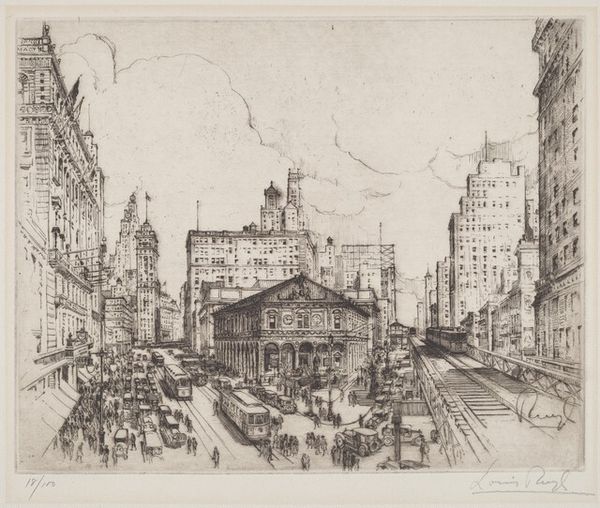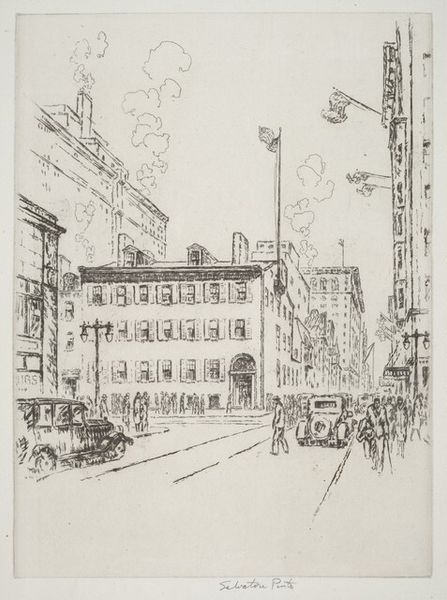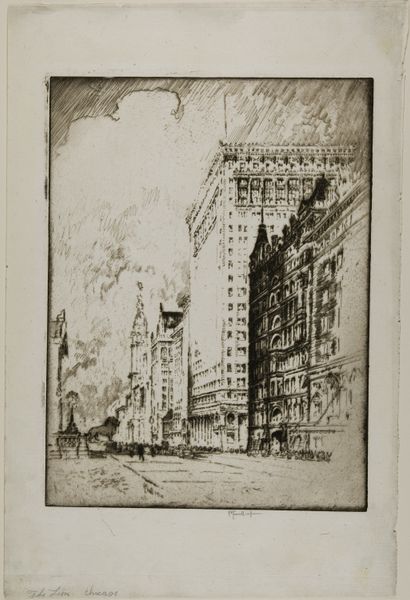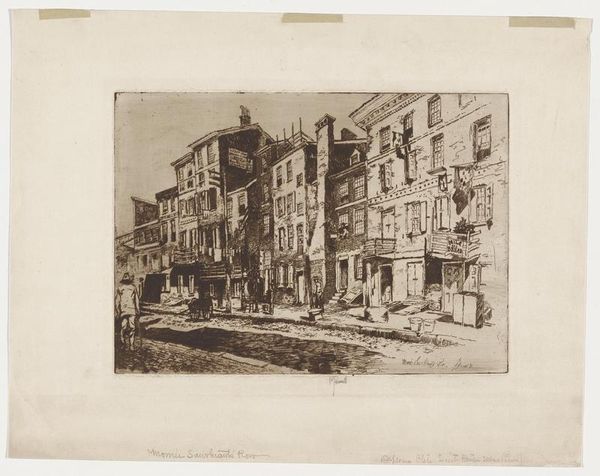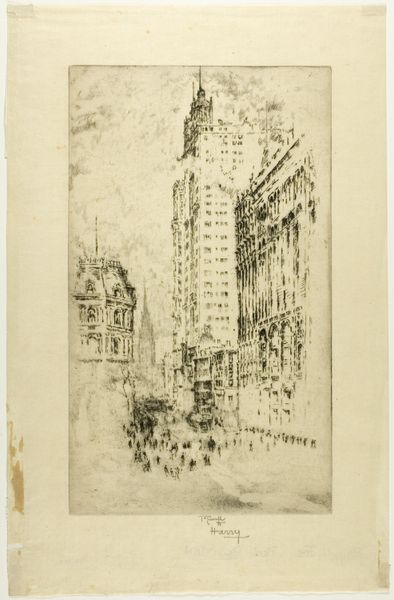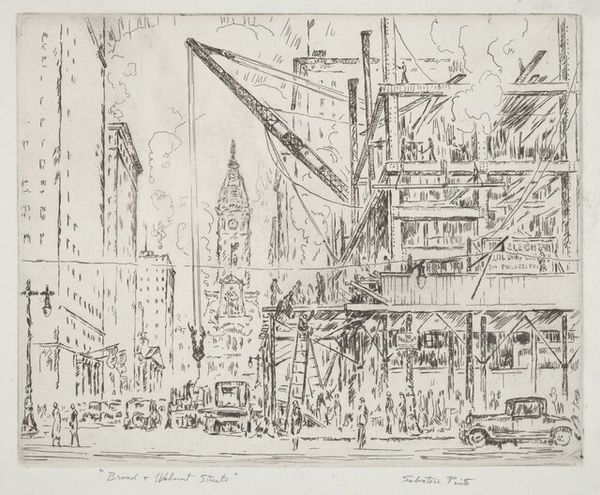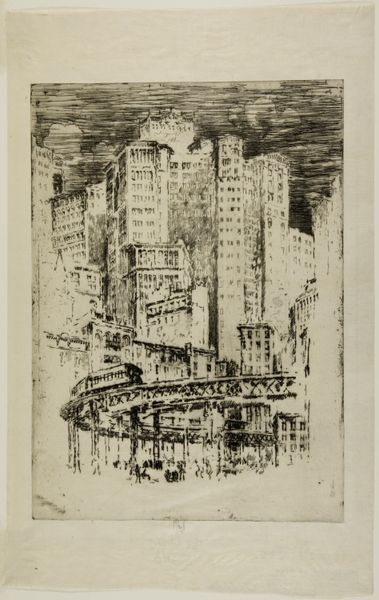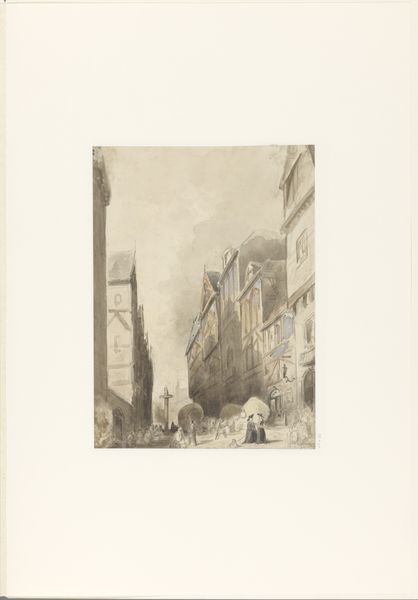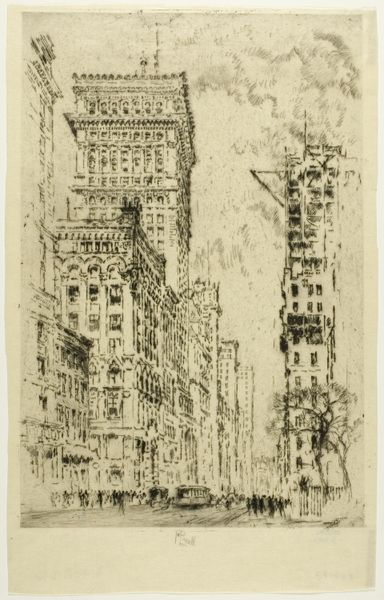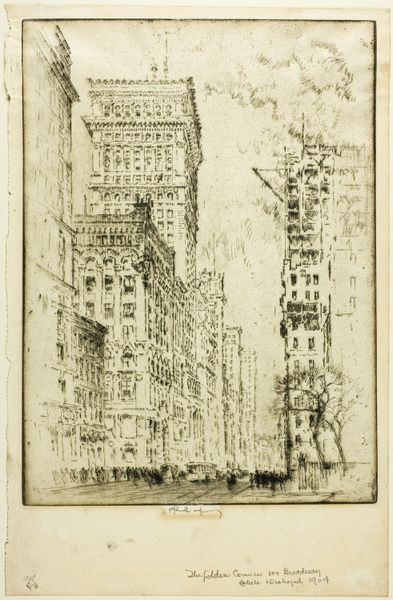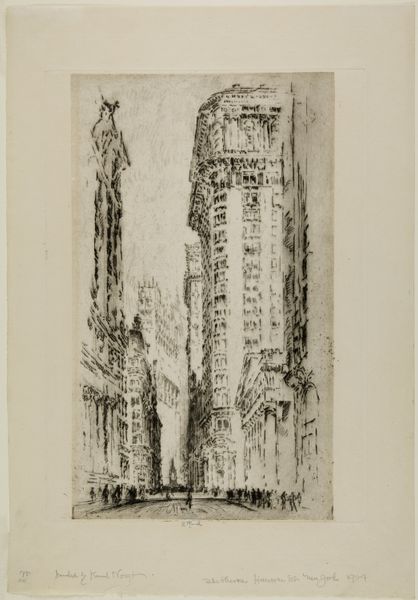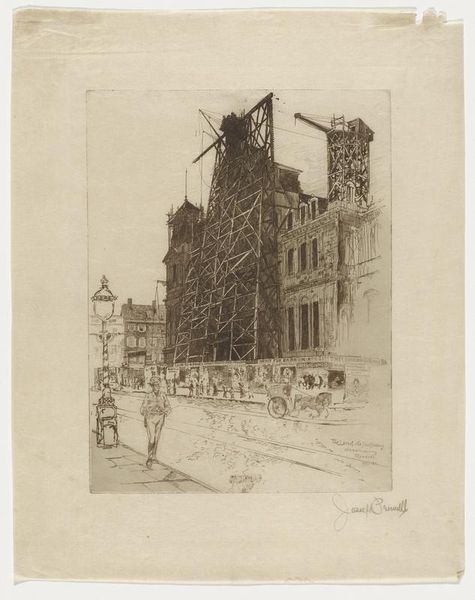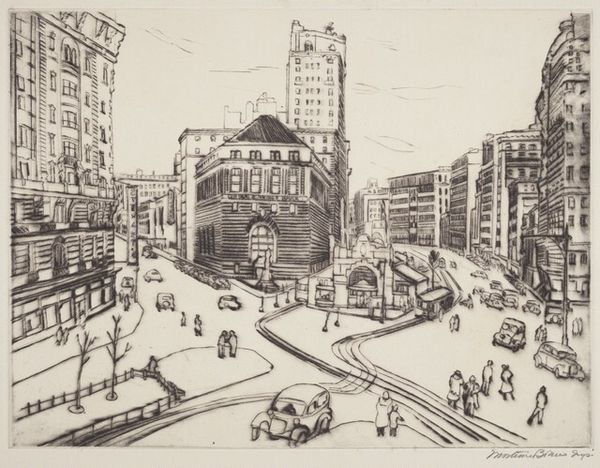
print, etching, graphite
# print
#
etching
#
etching
#
line
#
graphite
#
cityscape
#
realism
Dimensions: 5 15/16 x 7 7/8 in. (15.08 x 20 cm) (plate)8 1/16 x 8 7/8 in. (20.48 x 22.54 cm) (sheet)
Copyright: No Copyright - United States
Editor: Here we have Gustav Goetsch's "Second Street," an etching from around the early 20th century. It strikes me as quite a busy, bustling scene. What stands out to you when you look at this piece? Curator: What I see here, beyond the visual representation, is a reflection of urban life during a period of intense social and economic transformation. How do you think the artist engages with class and labor in this cityscape? Does the depiction of commerce hint at broader power structures? Editor: I hadn’t considered that! It seems like the people depicted are mainly middle or upper class; perhaps that reveals something about the artist's perspective or the intended audience for the work? Curator: Precisely! Consider the historical context. Whose stories are typically told, and whose are marginalized or absent? Goetsch provides a snapshot of privilege, but perhaps unconsciously. Whose narratives are we not seeing in this portrayal of city life, and why does that matter? Editor: So by looking at who's represented, we can start to unravel the societal dynamics of the time. Curator: Absolutely. It encourages us to consider the intersectionality of class, gender, and race and to think critically about how those elements shape not only our history but our present as well. Editor: I will never see cityscapes in the same way again! Thanks! Curator: And I think that understanding art's connection to social issues will make you a better art historian, one sensitive to a multitude of perspectives.
